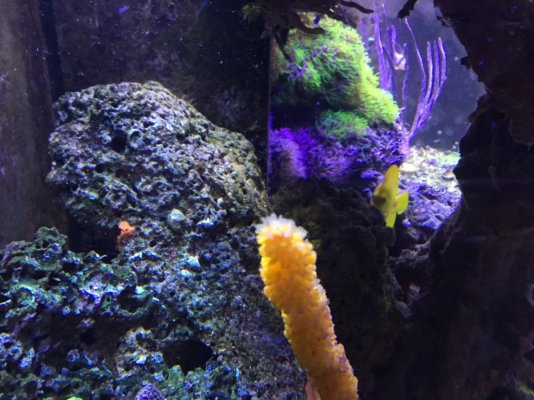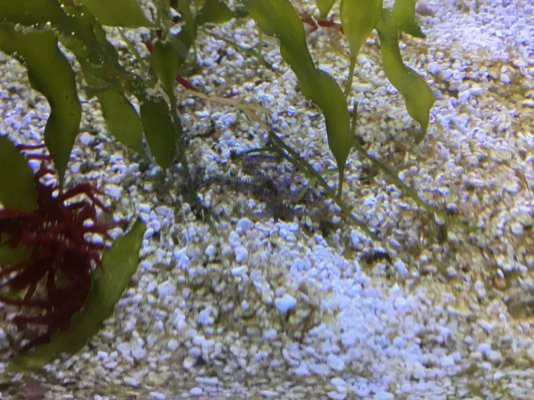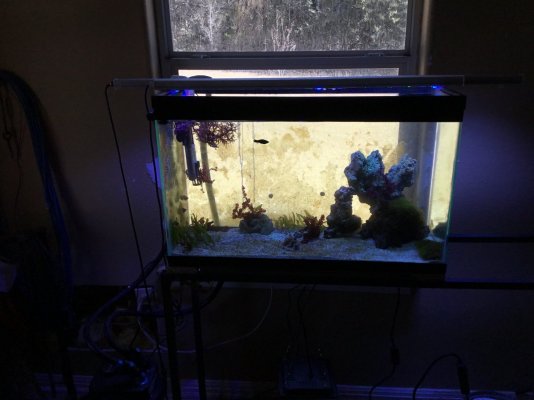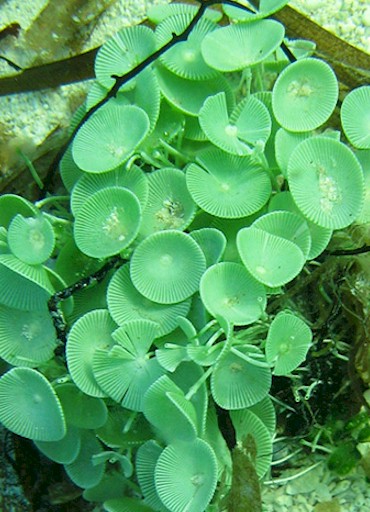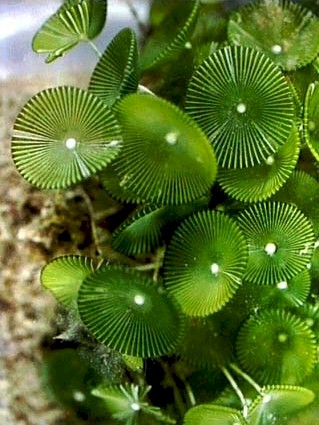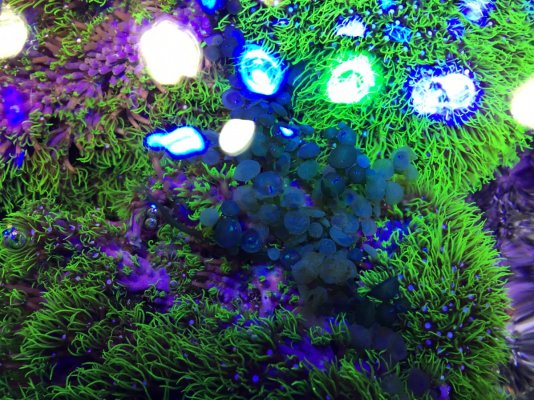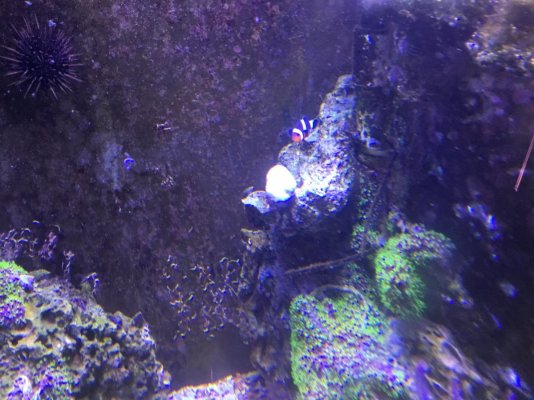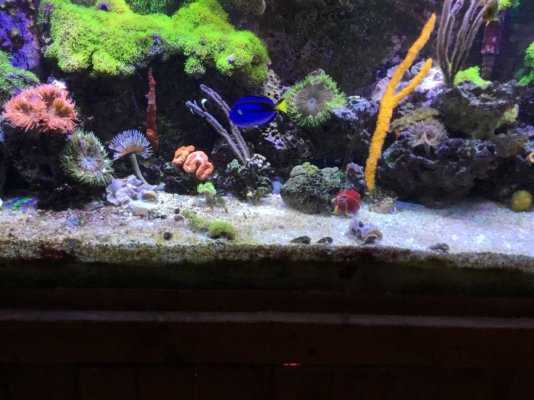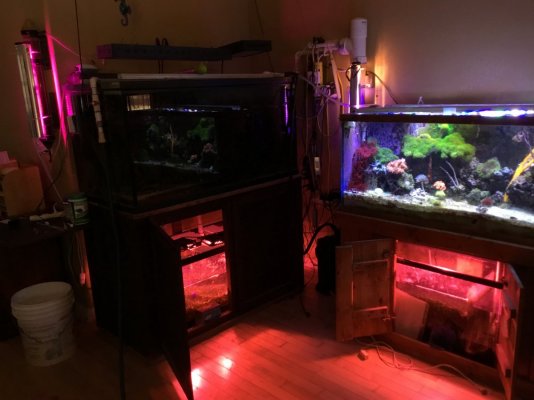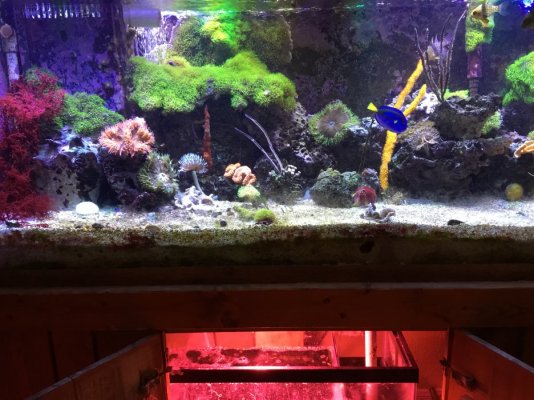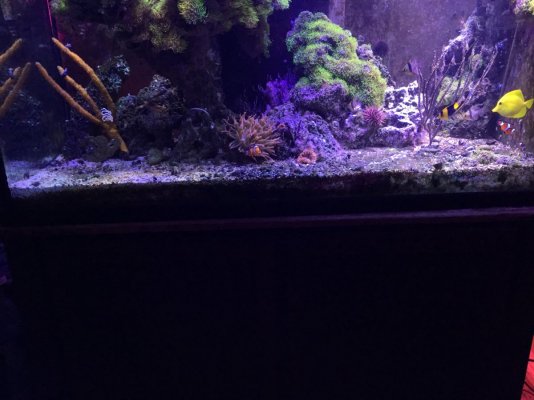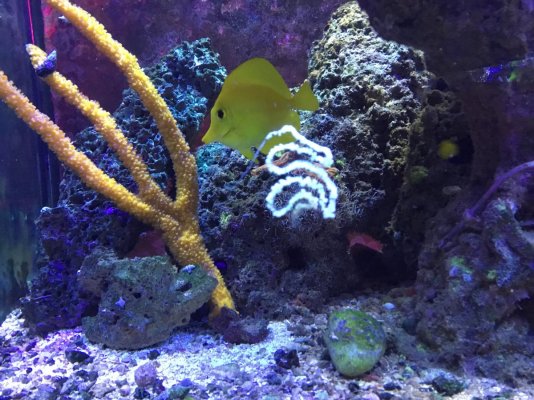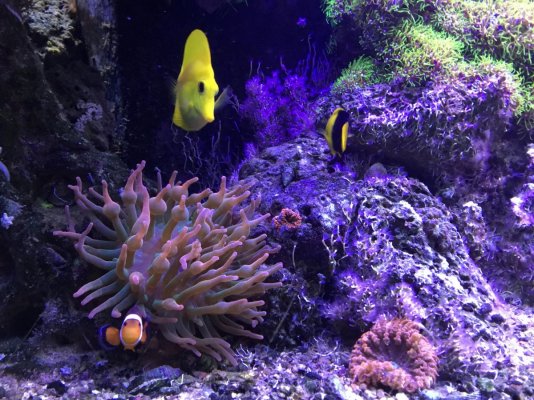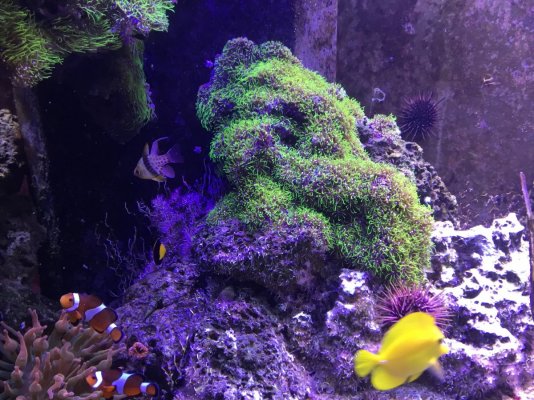This morning while viewing 120G display, I noted a discoloration line on Orange Tree Sponge branch, so I blasted it with numerous jets from Turkey baster to see a Micro Starfish drift down to the substrate. For the last five days, I have added 100ml of 3% hydrogen peroxide to display tank. On each occasion, return pump was off which lowered level of display tank, for simplicity sake I estimated display tank water volume at 100G and ignored displacement of rock. In effect, concentration dosage will be slightly higher as I used 100ml of 3% peroxide into 120G tank. I waited till lights out for a few hours, then removed flow from algae refugium and diy algae reactor. Peroxide added to display tank in one dose in high flow area. After four hours, refugium and algae filter were brought back on line.
Let’s put this in perspective with a time line referenced to loss of power on Monday, Feb 15 during winter blizzard in Texas. Fortunately, when power went out for two hours, it was daylight. I had already purchased inexpensive battery operated air pumps and they were still in Amazon box. Within 5 minutes, I had both display tanks with air bubbles.
I have used this as a reset on this tank, because of neglect of TLC on my part. So, this is day five of 3% peroxide treatment of 1ml per gallon in display tank. At day two, during lights out after 4 hours of treatment, I added fresh clam juice and saw an instant increase of spaghetti worms across substrate. After 5 days I can saw that Orange Tree Sponge is in great shape as are the micro starfish grazing on sponge. Flower anemone, RBTA, Gorgonion, bristle worms & pods are all good.
At this time, the Green Leather is the only apparent distressed organism, besides GHA, green cyno on rocks and red cyno on gravel. I will recheck spaghetti worms after treatment today.
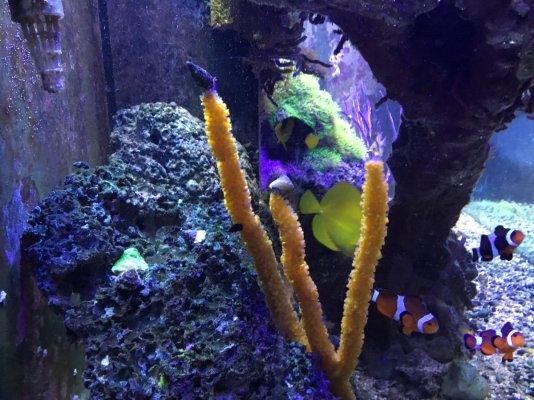
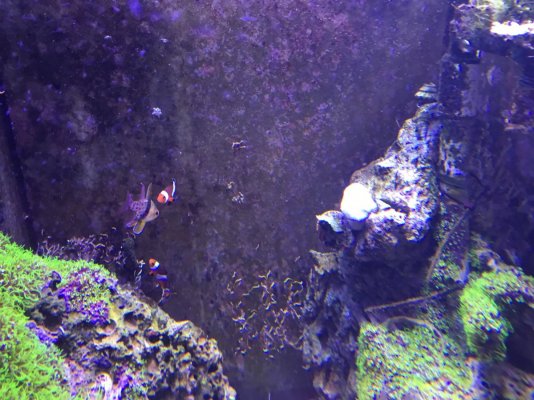
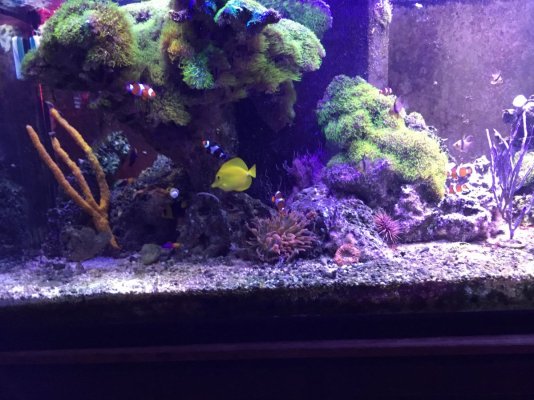
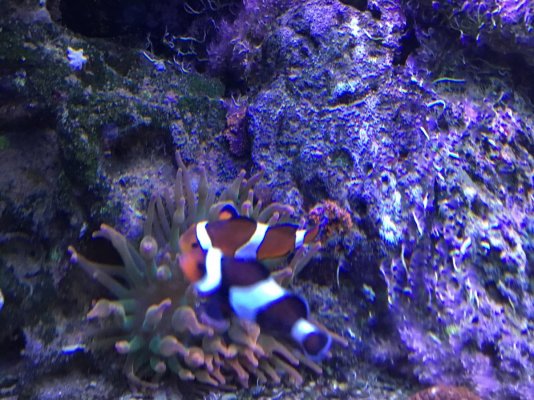
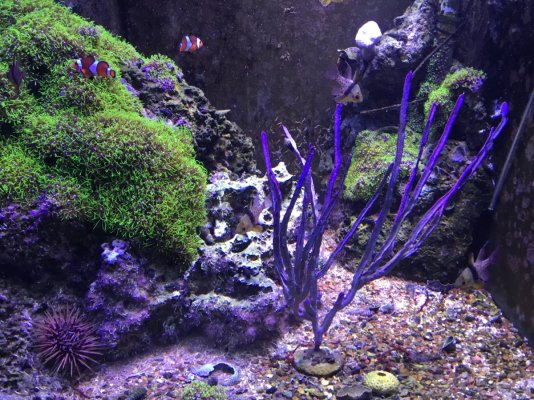
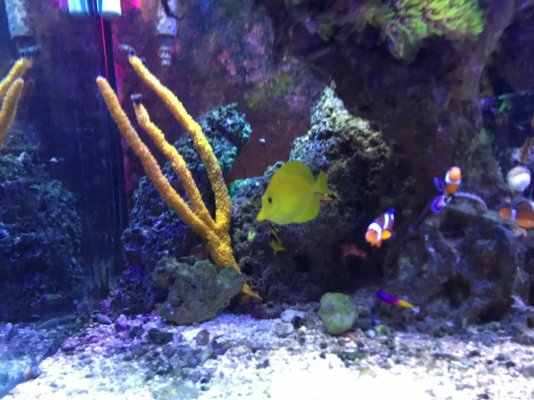
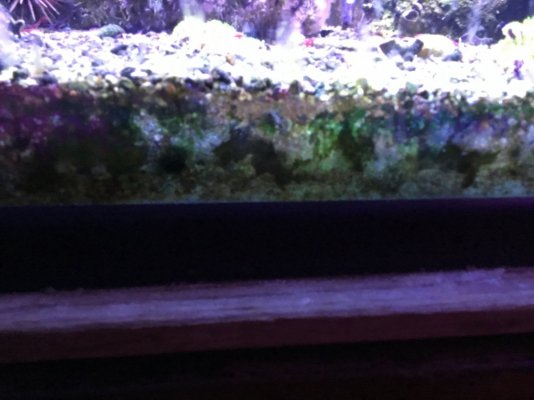
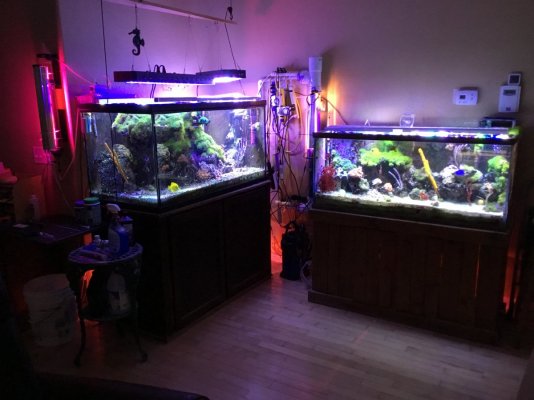
Let’s put this in perspective with a time line referenced to loss of power on Monday, Feb 15 during winter blizzard in Texas. Fortunately, when power went out for two hours, it was daylight. I had already purchased inexpensive battery operated air pumps and they were still in Amazon box. Within 5 minutes, I had both display tanks with air bubbles.
Penn Plax Silent Air B11 Battery Operated Aquarium Air Pump For Power Outage Automatic Turn On Keeps Fish Safe @ $13.30
I have used this as a reset on this tank, because of neglect of TLC on my part. So, this is day five of 3% peroxide treatment of 1ml per gallon in display tank. At day two, during lights out after 4 hours of treatment, I added fresh clam juice and saw an instant increase of spaghetti worms across substrate. After 5 days I can saw that Orange Tree Sponge is in great shape as are the micro starfish grazing on sponge. Flower anemone, RBTA, Gorgonion, bristle worms & pods are all good.
At this time, the Green Leather is the only apparent distressed organism, besides GHA, green cyno on rocks and red cyno on gravel. I will recheck spaghetti worms after treatment today.
| Price: |








Last edited:





